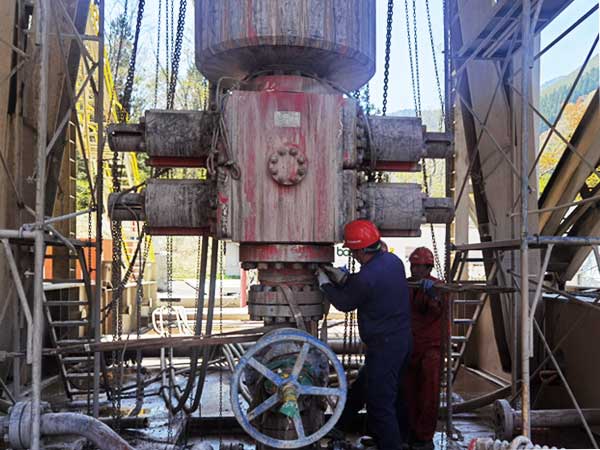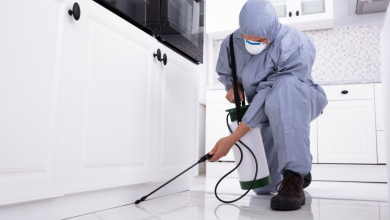The oil and gas industry faces significant risks during drilling operations, particularly from unexpected pressure surges that can lead to a blowout. A blowout, in this context, refers to an uncontrolled release of oil, gas, or other well fluids from the wellbore, often leading to severe consequences such as environmental disasters, loss of life, and economic loss. One of the most critical safety devices designed to prevent such occurrences is the blowout preventer . This equipment serves as a vital component in controlling well pressure, ensuring that drilling operations remain safe and under control. The importance of blowout preventers is highlighted by their necessity on every drilling rig, both onshore and offshore.
Blowout preventers have become a central focus in the oil and gas industry, especially after high-profile incidents like the Deepwater Horizon disaster in 2010, which highlighted the devastating impact of a blowout when the BOP system fails. This article will examine the functions, components, types, and significance of BOPs, as well as recent innovations and future developments in the technology.
The Importance of Blowout Preventers in Drilling Operations
The main function of a BOP is to prevent the uncontrolled release of oil, gas, or other fluids from a well during drilling operations. Oil and gas wells are drilled into high-pressure zones deep beneath the Earth’s surface. During these drilling operations, sudden changes in pressure, known as kicks, can occur. A kick happens when formation fluids, such as oil or gas, enter the wellbore due to an imbalance in pressure between the well and the reservoir. If not managed properly, a kick can escalate into a blowout.
A blowout preventer acts as a safety device that seals the wellbore, either partially or completely, to maintain pressure control. By controlling the flow of fluids in and out of the well, the BOP prevents the escalation of kicks into blowouts. The consequences of a blowout can be disastrous, including the loss of human lives, damage to the environment, and the destruction of expensive drilling equipment and infrastructure.
Key Functions of a Blowout Preventer
Pressure Containment: The primary function of a blowout preventer is to contain and manage wellbore pressure during drilling operations. By sealing off the wellbore, the BOP helps maintain the necessary pressure balance to prevent kicks and blowouts.
Shutting in the Well: If a kick occurs, the BOP can be activated to shut in the well, stopping the uncontrolled flow of fluids. This is achieved by closing the BOP’s rams or annular elements, which either seal around the drill pipe or close off the well entirely.
Diverting Flow: In situations where the well cannot be completely sealed, the BOP can divert the flow of fluids away from the rig to a safer location for processing and containment. This helps protect the rig and personnel from potential hazards caused by escaping hydrocarbons.
Providing Access for Well Control Operations: The BOP system allows for the introduction of kill fluids, such as drilling mud, into the wellbore to balance pressure and regain control. This function is crucial for stopping kicks and ensuring safe well operations.
The Role of the BOP in Preventing Disasters
The most notorious example of a BOP failure occurred during the Deepwater Horizon blowout, which resulted in the largest oil spill in U.S. history. The failure of the blowout preventer on the Macondo well led to a catastrophic blowout, releasing millions of barrels of oil into the Gulf of Mexico. The incident underscored the importance of reliable BOP systems, as well as the need for robust safety procedures and regular testing to ensure proper functioning.
In the aftermath of Deepwater Horizon, there have been significant changes in regulations and standards for BOP design, maintenance, and testing. Regulatory bodies such as the Bureau of Safety and Environmental Enforcement (BSEE) have introduced stricter requirements to ensure that BOPs are reliable and able to perform under the most challenging conditions.
Types of Blowout Preventers
Blowout preventers come in different types, each designed for specific functions in managing wellbore pressure. The two primary categories of BOPs are ram-type and annular blowout preventers. Most drilling operations use a combination of these types in a BOP stack to provide redundancy and multiple layers of protection.
1. Ram-Type Blowout Preventers
Ram-type blowout preventers are named for the rams, or piston-like components, that slide across the wellbore to seal it off. There are several variations of ram BOPs, each serving a distinct purpose in well control:
Pipe Rams: These rams are designed to seal around the drill pipe. Pipe rams have semicircular cutouts that fit snugly around the drill string, allowing them to close the wellbore without damaging the pipe.
Blind Rams: Blind rams are used to seal the wellbore when no pipe is present. They close off the well completely, stopping the flow of fluids from the wellbore.
Shear Rams: Shear rams serve as an emergency mechanism for cutting through the drill pipe and sealing the wellbore in critical situations. If other rams fail to stop the flow of fluids, shear rams can cut the pipe and close the well. This capability is considered a last-resort option in well control.
Variable Bore Rams: These rams can seal around drill pipes of varying diameters, offering greater flexibility in well control operations.
2. Annular Blowout Preventers
Annular blowout preventers, also known as bag-type BOPs, use a flexible rubber sealing element called a packing unit to seal the wellbore. The packing unit can expand and contract to close around the drill pipe or casing, making annular BOPs more versatile than ram-type BOPs. Annular BOPs are capable of sealing around irregularly shaped objects or even open holes, which is why they are often used as the first line of defense in well control.
The annular BOP is typically positioned at the top of the BOP stack, providing an additional layer of protection in combination with ram BOPs. The ability to seal around various pipe sizes makes annular BOPs particularly useful in managing wellbore pressure during drilling operations.
BOP Stacks: Combining BOPs for Maximum Safety
In drilling operations, multiple BOPs are often arranged in a BOP stack. A typical BOP stack consists of several ram-type BOPs, along with one or more annular BOPs. This stacked arrangement provides multiple layers of protection, ensuring that if one BOP fails, another can be activated to regain well control. The BOP stack is usually mounted on top of the wellhead, where it can be quickly accessed and operated during emergencies.
Offshore drilling operations, especially in deepwater environments, require specialized subsea BOP stacks, which are installed on the seabed and remotely operated from the surface. These subsea BOP stacks are equipped with advanced technology to monitor well conditions and control pressure in real-time.
Components of a Blowout Preventer System
The blowout preventer is just one part of a larger system designed to manage well control during drilling operations. Several components work together to monitor wellbore pressure, control the flow of fluids, and provide emergency shut-in capabilities.
1. Accumulator Units
An accumulator unit stores hydraulic fluid under pressure, which is used to operate the BOP. The accumulator provides the hydraulic power needed to open and close the BOP’s rams and valves. Accumulator units are critical for ensuring that the BOP can be quickly activated in an emergency.
2. Control Panels
BOP systems are controlled using a series of control panels, which allow operators to activate or deactivate the BOP, monitor wellbore pressure, and perform routine tests. In offshore operations, control panels are often located remotely, allowing the BOP system to be operated from a distance.
3. Choke and Kill Lines
Choke and kill lines are pipelines connected to the BOP system that allow for the circulation of fluids in and out of the wellbore. Choke lines are used to manage wellbore pressure by controlling the flow of fluids out of the well, while kill lines are used to pump heavy fluids (such as drilling mud) into the well to balance pressure.
4. Remote Operated Vehicles (ROVs)
In subsea drilling, ROVs are used to operate and maintain BOPs located on the seabed. These unmanned underwater vehicles can perform tasks such as valve manipulation, visual inspections, and emergency interventions when human access is not possible.
Maintenance and Testing of Blowout Preventers
Given the critical role BOPs play in ensuring well control, they are subject to stringent maintenance and testing protocols. Regular inspections and pressure tests are essential to confirm that the BOP system is functioning properly and ready to respond in an emergency.
Routine Pressure Testing
BOP systems undergo routine pressure tests to verify their ability to seal the wellbore under high-pressure conditions. Any leaks or malfunctions must be immediately addressed to ensure the integrity of the system. Pressure tests are typically conducted before and during drilling operations, especially when drilling through high-pressure formations.
Certification and Compliance
BOPs are designed and tested according to industry standards set by organizations such as the American Petroleum Institute (API). These standards define the minimum design, performance, and maintenance requirements for BOP systems to ensure their reliability during drilling operations.
Regulatory bodies such as the BSEE and other national authorities also enforce strict regulations for the use and maintenance of BOPs, particularly in offshore and deepwater environments.
The Future of Blowout Preventer Technology
As the oil and gas industry moves into deeper and more challenging environments, the demands placed on blowout preventers continue to increase. Technological advancements are focusing on improving the reliability, automation, and remote monitoring capabilities of BOP systems.
Automated BOP Systems
One of the key trends in BOP technology is the development of automated systems that monitor wellbore conditions in real-time and automatically activate the BOP if pressure anomalies are detected. These systems reduce the need for human intervention and improve response times in emergency situations.
Remote Monitoring and Control
In deepwater drilling, where BOPs are located thousands of feet below the surface, remote monitoring and control systems are essential. New technologies are being developed to allow operators to control BOP systems from onshore facilities, reducing the need for offshore personnel and improving safety.
Enhanced Shear Ram Capabilities
Recent advancements in shear ram technology have focused on improving their ability to cut through larger, stronger drill pipes and other wellbore components. Enhanced shear rams provide a more reliable option for sealing the well in emergency situations, ensuring that the BOP can perform its intended function under the most challenging conditions.
Conclusion
Blowout preventers are a critical blowout preventer device in the oil and gas industry, designed to prevent blowouts and protect lives, assets, and the environment. Their development and ongoing technological improvements have significantly reduced the frequency of blowouts, but incidents like Deepwater Horizon emphasize the importance of rigorous testing, maintenance, and innovation.
As drilling operations move into more complex and high-pressure environments, the role of blowout preventers will continue to grow in importance. Through technological advancements and stringent safety practices, the industry is ensuring that BOPs remain a reliable line of defense in the prevention of oil and gas well blowouts.





